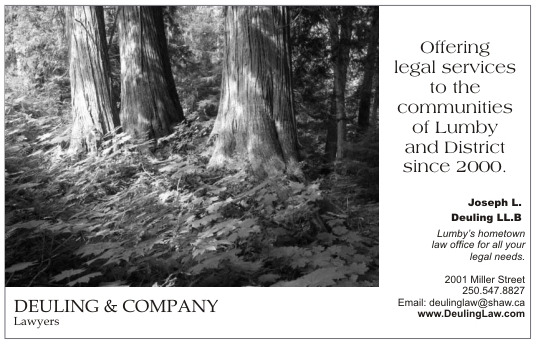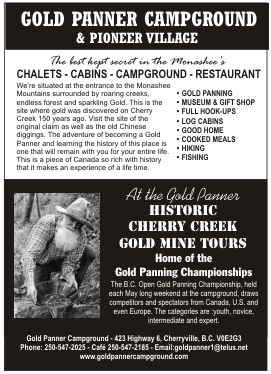
The Monashee Almanac is an online journal that shares history, mysteries and stories about early British Columbia and in particular the Monashee, Okanagan and Shuswap.
Celebrating History, Mysteries & Stories

Today, there is a
common belief
that “Monashee” translates into the “Mountains of Peace.” Previously these mountains were called the “Gold Range” but the name “Monashee Mountains” was adopted on April 2, 1918 and given legal status as a place name in Ottawa under file OBF 0248.
Could there be Sidhe in these mountains?
The Monashee Almanac takes a meta-historical journey into a hidden translation of “Monashee” and speculates about if there are elves and faeries in these mountains?
Compiled by Don Elzer
mona
shee
The Monashee included all the mountains in the southern interior, from the Upper and Lower Arrow Lakes and Columbia River west to the valleys of the Okanagan and Spallumcheen Rivers and Shuswap Lake, and from the US border north to the Canoe River. On July 10, 1962 the area was revised when the government removed the mountains of the Shuswap and Quesnel Highlands and included them within the Interior Plateau rather than within the Monashee Mountains.
At the time of the naming, correspondence to and from BC's Chief Geographer describes “Monashee” as being Gaelic, and derived from the phrase monadh-sith, "mountain of peace."
Donald McIntyre, a Highlander believed to be from Wales was credited with naming the mountains 1881. According to an Okanagan Historical Society account,(Ok. 6:156-157), McIntyre staked the Monashee Mines claim, but they add that there was a somewhat similar name which could have represented the basis for the name. A mountain called Monadhliath, in Inverness-shire, translated means "grey or light blue mountain or moor."
Anglesey it's one of the most beautiful Islands of the United Kingdom as well as historical and touristic ones. In addition the village of: Llanfairpwllgwyngyllgogery-
chwyrndrobbwy-llllantysiliogogogoch the longest name in the world.
The history of the island is strangely similar to the recent Hollywood film Avatar. In the first century the Roman Empire conquered Britain. Anglesey was the last Celtic region. The Roman historian Tacitus recorded the Battle of the Menai Strait. A line of Celtic warriors, men and women, stood across the water. Their leaders, the Druids, shouted terrifying spells. Many roman soldiers were paralysed with fear. The Romans lost many men. After a terrible battle, the Roman army was victorious. They killed the Druids and destroyed their sacred oak trees.
Once called the Gold Range, the Monashee Mountains represented challenging terrain for early explorers like Donald McIntyre. Was he searching for gold, or something very different?
Top Photo: The remote rainforests of the Upper Shuswap are so rich with vegetation that they could hide nearly anything including faeries and elves. 






Photos by Don Elzer
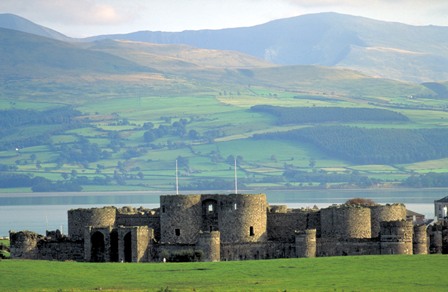
There is not a great deal of information about McIntyre and his motivations to explore in this particular region, nor is there much of an explanation as to why the mountains are not named accurately as the Monadhsith or Monadhliath?
At the time when McIntyre named the mountain there was an almost fanatical movement to restore the historical accuracy to what was left of the old Celtic culture, particularly in the New World. McIntyre was an intellectual, a trained surveyor who may have been more aware of language and translation accuracies than he’s given credit for.
could all be used to describe something like a large land mass or mountain.
“Peace” in Gaelic is sìth.
But when the words are placed together to form “mountain of peace” they don’t seem to provide a clear meaning and they certainly don’t seem to phonetically sound like Monashee. For example the Rocky Mountains translated to Gaelic is: beanntan creagach which has a direct and clear meaning that these are “rocky mountains.”
Would McInytre have been so laxed regarding the name particularly if he registered a mining claim with a phase from his mother-tongue?
What happens if we conduct a translation based on the phonetic or actual spelling of Monashee?
“Mona” is translated as a place. The Isle of Mona is the original name of the Isle of Anglesey off the coast of Wales.
In the context of this geography, “shee” would be the pronunciation of sidhe who were said to inhabit the Isle of Mona.
So, the Mona Sidhe which would be directly pronounced Monashee, would accurately describe these inhabitants of this island.
This is where this particular translation gets very interesting, Mona was an ancient Druid stronghold which was destroyed by the Roman General Suetonius Paulinus around 65 CE.
Donald McIntyre’s naming of the Monashee appears to be based entirely on historical speculation which provides ample room for examining an alternative translation that might have some real logic associated with it.
The Story of Mona and the Sidhe
Long ago the Isle of Mona was known to be home to many Druids, it was located in the Irish Sea in the passage between Wales, Ireland and Scotland. It was, in fact, a Celtic holy place of immeasurable importance. Mona was said to be the "Center of Druidism" where new initiates went to learn their craft and ancient teachings.
In an attempt to exterminate Druidism, Suetonius Paulinus, commander-in-chief of the Roman troops in Britain, mustered a large force of men, both mounted and infantry on rafts, and attacked the island of Mona, the war was long and fierce, and while the Romans were successful with their invasion, the wrath from the Celts in Briton would cause them trouble for generations. The war cry that the Romans would learn to dread was “Remember Mona.”
Monashee Translated
“Mountain” in Gaelic is sliabh, pronounced, shleeve. Monadh would suggest “peaks” but it can also mean a bog or a peat moor. Mullach can also mean “peak” in Scots Gaelic.
Beinn, tòrr and sliabh
A world would eventually come to an end, and a great Earth-based culture would begin to erode and eventually disappear from Europe and the western world for nearly 2000 years. But what of this ancient place called Mona?
Mona was a sacred place the Druids considered as part of the Middle Kingdom, for years prior to the arrival of the Romans, sailors would occasionally see the island and some even landed on it, but then it would disappear, perhaps in the fog, perhaps into another dimension of place. Mona shared the Irish Sea with the Isle of Man and together they would be known as the Faerie Isle and would be central to the faerie lore that still exists today.
Sidhe pronounced as Shee is Gaelic and means “faerie” which in turn means “people of the hills” and they inhabited the island of Mona which contributed to the otherworldliness of the place which attracted the Druids. Many of the hills that dotted the landscape were constructed by these faerie people as shelters, homes and forts so that they would become one with the Earth, and so much so, that they as an entire people could disappear into the cavities of the planet at will.
These faerie hills also known as hollow hills were sacred places to the Sidhe who were considered to be a distinct race, quite separate from human beings yet having much contact with mortals over the centuries, and there are many documented testimonies to this, and even accounts of them frequenting the public markets of Laugharne and Milford Haven. Belief in this race of beings who have powers beyond those of humans to move quickly through the air and change their shape at will once played a huge part in the lives of people living in rural Ireland and Scotland.
It is difficult to pin-point an exact historical era as the time when faerie lore began. Many writers maintain that before the arrival of the Gaels, the ancient inhabitants of Ireland along with their Gods are the 'ancestors' of the Sidhe.
The Sidhe were also known as "The Lordly Ones" or "The Good People" and were descended from the "Tuatha de Danann" who settled in Ireland a millennia ago. In the Norse or Saxon realms the race would be known as Elves.
Before the Tuatha de Danann, Ireland was inhabited by another ancient and mystical race called the Fomorians, a semi-divine race who represented the gods of chaos and wild nature, as opposed to the Tuatha de Danann who would come to represent the gods of human civilization.
In the early Irish manuscripts (which were recorded from an earlier oral tradition) we find references to the Tuatha de Danann. In 'The Book of the Dun Cow' and the 'Book of Leinster' this race of beings is described as both "gods and not gods", pointing to the fact that they are 'something in between'. Also in the Book of the Dun Cow it says of wise men that: "it seems likely to them that they (the Tuatha de Danann) came from heaven, on account of their intelligence and excellence of their knowledge".
In fact, there is a story that the Tuatha de Danann came to Ireland in flying ships but could not land as the Fomorians had set up a great energy field that the ships could not penetrate. So they had to circle Ireland nine times before finding a breach in the energy field and setting down on Sliabh an Iarainn (The Iron Mountains) in Co. Leitrim.
Eons later, the first Gaels, the sons of Mil, arrived in Ireland, they found that the Tuatha de Danann, the people of the goddess Dana, already had control of the land. The sons of Mil (Milesians) fought them in battle and defeated them, driving them 'underground' where it is said they remain to this day in the hollow hills or Sidhe Mounds within a different dimension of space and time than our own. They are said to exist in the land of "Tír na nÓg" a mythical island to the west of Ireland.
The Sidhe of the subterranean mounds are also seen by the Irish as the descendants of the old agricultural gods of the Earth, (one of the most important being Crom Cruaich, the Crooked One of the Hill). These gods controlled the ripening of the crops and the milk yields of the cattle, therefore offerings had to be given to them regularly. In the Book of Leinster, it states that after their conquest, the Tuatha De Danaan took revenge on the sons of Mil by destroying their wheat and the goodness of the milk (the Sidhe are notorious for this even today). The sons of Mil were thus forced to make a treaty with them, and ever since that time the people of Ireland have honoured this treaty by leaving offerings of milk and butter to the Good People.
A notable feature of the Sidhe is that they have distinct tribes, ruled over by fairy kings and queens in each territory. It would seem that the social order of the Sidhe corresponds to the old aristocracy of ancient Irish families, which is in itself a reflection of the ancient Celtic caste system.
One story describes one of the faerie islands to be the legendary Avalon where King Arthur is described by 15th century poet Lydegate, as a “King crowned in Fairye”. He describes that Arthur was brought here mortally wounded to be tended by four fairye queens. Arthur is believed still to lie with his knights, in the heart of a faerie hill, in a deep sleep from which he will awake in our hour of need again to rule over England again.
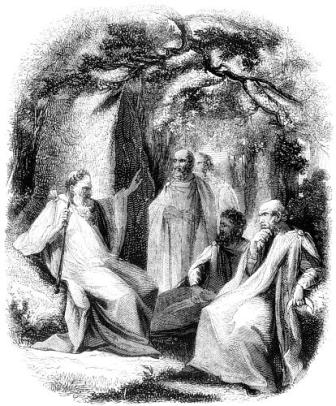
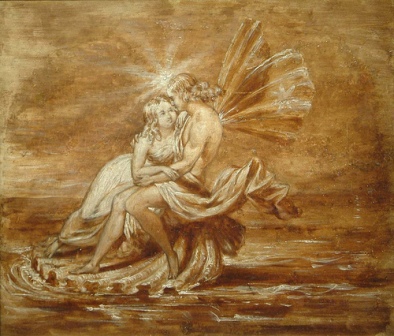
Druids
A druid was a member of the priestly class in Britain, Ireland, and Gaul (France), and possibly other parts of Celtic Europe and Galatia during the Iron Age and possibly earlier. In the wake of the Celtic revival during the 18th and 19th centuries, fraternal and Neopagan groups were founded based upon the ideas about the ancient druids, a movement which is known as Neo-Druidism.
In folk belief and practice, the Sidhe also called the Aos sí are often appeased with offerings, and care is taken to avoid angering or insulting them. Often they are not named directly, but rather spoken of as "The Good Neighbors", "The Fair Folk", or simply "The Folk". The most common names for them, aos sí, aes sídhe, daoine sídhe (singular duine sídhe) and daoine sìth mean, literally, "people of peace". The aos sí are generally described as stunningly beautiful, though they can also be terrible and hideous.
Aos sí are sometimes seen as fierce guardians of their abodes – whether a fairy hill, a fairy ring, a special tree (often a hawthorn) or a particular loch or wood. The Gaelic Otherworld is seen as closer at the times of dusk and dawn, therefore this is a special time to the aos sí.
Above: Painting titled "Undine" by Sir Josheph Noel Paton.
The Sidhe
Also known as the Aos sí, aes sídhe, daoine sídhe (singular duine sídhe) and daoine sìth
The Awakening of the Sidhe
Clearly the belief in the Sidhe is part of a pre-Christian religion which survived for thousands of years and which has never been completely wiped out. To this day, the realm of the faeries or Sidhe are most evident in the frontiers of a moment such as the sudden appearance of a rainbow or twilight, the emergence of a mist or the first cast of a moon shadow. It is in these moments that a Sidhe can reveal itself ever so briefly before they become concealed again.
Where did the Sidhe go? Where is Tír na nÓg?
Tír na nÓg was considered a place beyond the edges of the map, located on an island far to the west. It could be reached by either an arduous voyage or an invitation from one of its faerie residents. It is said that this otherworld is a place where sickness and death do not exist. It is a place of eternal youth and beauty. Here, music, strength, life, and all pleasurable pursuits come together, poverty does not exist and happiness lasts forever.
Could it be that Donald McIntyre came to the western reaches of the New World not only searching for gold but fulfilling an invitation to join the Sidhe? We know little about McIntyre or his journey, what we do know is that he migrated off the more traveled paths and made his way into the shadows of unchartered mountains that lay beyond the Hudsons Bay Company Fur Brigade Trail and Fort Kamloops. Could he have observed Shuswap or Okanagan Indians in their kekuli’s (pithouses) and then thought of them as the people of the hollow hills?
Perhaps Donald McIntyre new of some ancient wisdom that others didn't? Could he have believed that this was Tír na nÓg?
Donald McIntyre may have been part of a popular movement that had spread through the Victorian Empire in the 1800’s. It was one that celebrated ancient Celtic history. The roots of this cultural resurgence that included faerie lore would lead Sir James Matthew Barrie to write Peter Pan in 1904 and Lewis Carroll to write Alice in Wonderland; Andrew Lang wrote the Fairy Books and there were many more and they would inspire a next generation of authors that included the likes of J.R.R. Tolkien and C.S. Lewis.
Perhaps we will never know if McIntyre was inspired to search for Tír na nÓg , but the story of Mona and the Sidhe is intriguing enough that we may want to look twice at what lurks at the sudden edges of a rainbow or when a light fog forms deep in the forest.
Because there might be faeries in the mist.
